What Is The Average Spin Rate Of A PGA Tour Pro With Every Club?
A look at some Trackman stats makes for interesting reading - and could help you get closer to where you need to be
- Sign up to Golf Monthly Newsletter Newsletter

Most recreational golfers probably don’t know their driver spin rate, let alone every golf club in the bag. However, ask elite Tour pros for these numbers and most would have a fairly good idea of what they are, for they spend hours on the range perfecting their equipment and tinkering with different ball flights.

What Is Spin Rate?
Spin rate is the amount of spin on the golf ball immediately after impact, and it has a major influence on the height and distance of a shot. There are many factors that affect spin rate, including club and ball design, friction, and impact location. However, spin rate is generated primarily by club speed and spin loft.
As a very general rule of thumb – and it’s important to note that there’s no one size fits all to driver spin rates, because everyone delivers the club differently to the ball – you’re probably looking for something in the region of 2,000 to 3,500rpm with a driver, but this depends on a number of factors.
PGA Tour Average Spin Rate
According to Trackman, average spin rates from the PGA Tour in 2022 for each club in the bag was as follows:
- Driver, 2,686
- 3-wood, 3,655
- 5-wood, 4,350
- Hybrid, (15-18°), 4,437
- 3-iron, 4,630
- 4-iron, 4,836
- 5-iron, 5,361
- 6-iron, 6,231
- 7-iron, 7,097
- 8-iron, 7,998
- 9-iron, 8,647
These numbers might not mean a lot, but let’s consider what happens if your spin rate isn’t right . If you create too much spin at impact, the ball tends to start off low, before ballooning up into the sky. Conversely, if you don’t generate enough spin, the ball will have a tendency to just drop out of the air. In both cases, carry and total distance will be short of where it could be.
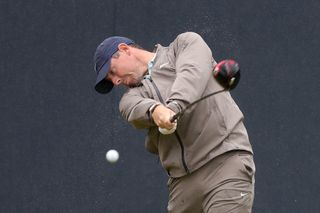
Rory McIlroy 's numbers makes for an interesting case study. According to the latest stats provided by the PGA Tour, the Northern Irishman averages 2,324.8 off the tee at the time of writing, which is below the Tour average of 2,570.6 and one of the reasons why he hits the ball so far.
Interestingly, the average in 2007 was 2,814.2. This decrease of 300rpm over a 16-year period is proof that one of the reasons that drives are going further is due to lower spin.
Get the Golf Monthly Newsletter
Subscribe to the Golf Monthly newsletter to stay up to date with all the latest tour news, equipment news, reviews, head-to-heads and buyer’s guides from our team of experienced experts.
For comparison, according to Trackman the LPGA Tour average spin rate for driver is 2,611, and 5,943 for 6-iron.
How Pro Spin Rates Compare To Amateur Golfers
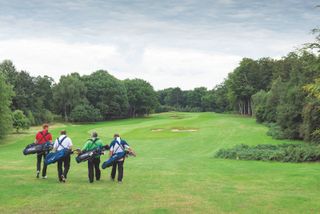
- Male scratch or better (driver), 2,896 v Female scratch or better (driver), 2,831
- Male 5-handicap, 2,987 v Female 5-handicap, 3,027
- Male 10-handicap, 3,192 v Female 10-handicap, 3,207
- Male 14.5-handicap, 3,275 v Female 15-handicap 3,287
Michael has been with Golf Monthly since 2008. As a multimedia journalist, he has also worked for The Football Association, where he created content to support the men's European Championships, The FA Cup, London 2012, and FA Women's Super League. As content editor at Foremost Golf, Michael worked closely with golf's biggest equipment manufacturers, and has developed an in-depth knowledge of this side of the industry. He's now a regular contributor, covering instruction, equipment and feature content. Michael has interviewed many of the game's biggest stars, including six world number ones, and has attended and reported on many Major Championships and Ryder Cups. He's a member of Formby Golf Club.
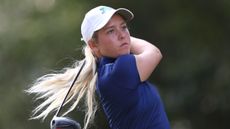
The Irish player, who went unbeaten at the Sunningdale match, has announced on Instagram she has left her amateur career behind
By Mike Hall Published 4 September 24
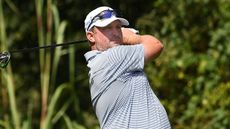
Steve Wheatcroft has opened up on his issues, which came to the surface in 2019, three years after he retired from the game
- Contact Future's experts
- Terms and conditions
- Privacy policy
- Accessibility statement
- Cookies policy
- Advertise with us
Golf Monthly is part of Future plc, an international media group and leading digital publisher. Visit our corporate site . © Future Publishing Limited Quay House, The Ambury, Bath BA1 1UA. All rights reserved. England and Wales company registration number 2008885.
Data matters: Inside the PGA Tour-Trackman partnership
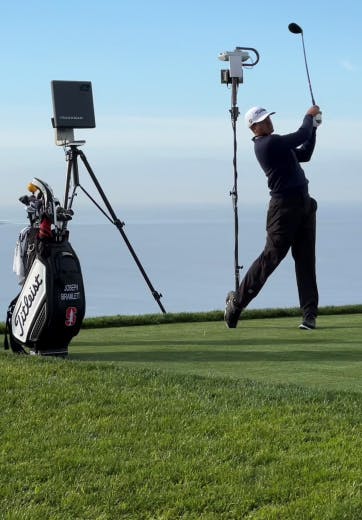
Starting in 2022, the PGA Tour and Trackman joined forces to revolutionize the way we watch and understand the game of golf, bringing fans a more immersive experience than ever before.
With the integration of Trackman's cutting-edge Doppler radar and club and ball tracking technology, nearly every shot during every PGA Tour event is traced and shared across various platforms. This gives golf fans a deeper level of insight into players' performance, detailed club and ball data, and the impact of environmental factors on the game.
Here’s a closer look at how this partnership elevates the way we follow the world's best golfers:
For the Fans
The PGA Tour's decision to expand its partnership with Trackman marks a significant milestone in broadcast golf. By implementing our innovative tracking and tracing solutions, viewers gain unparalleled access to real-time data on club speed, ball speed, curve, landing spin, launch angle, spin rate, apex, carry and more. This data is seamlessly integrated into television broadcasts, OTT platforms and digital channels, offering fans more insight into how and why shots move and arrive at their positions.
Unmatched Tracking
Trackman's advanced aerodynamic models go beyond conventional tracking capabilities. The system can accurately assess the impact of external factors such as wind, weather and altitude on each shot, providing fans with a comprehensive view of how these elements influence the game. Additionally, our tracking system's ability to follow the flight of balls up to 400 yards under various conditions — including rain, fog, sunrise and sunset — ensures that no shot goes unnoticed.
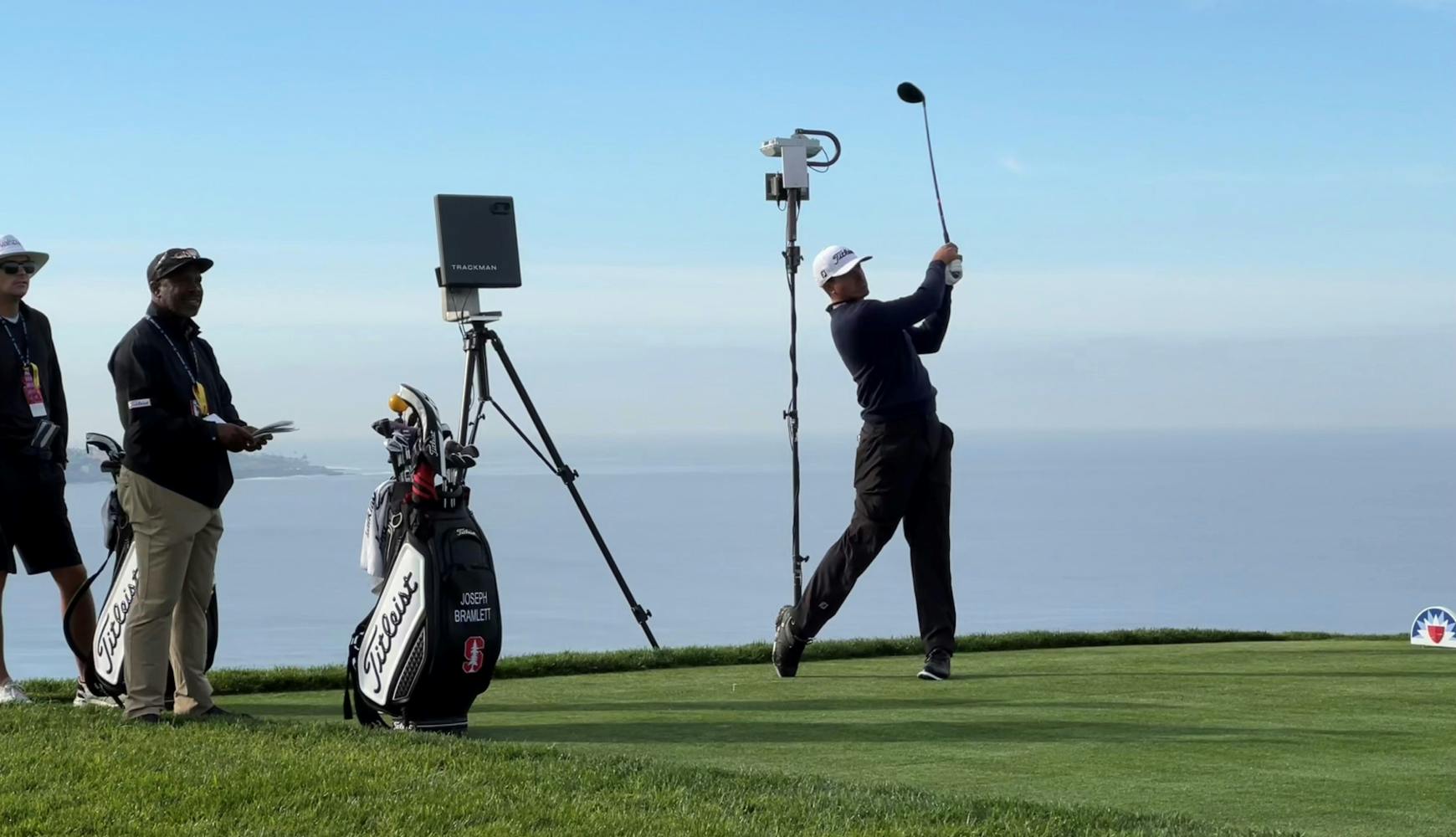
Expanded Capabilities
The partnership between the PGA Tour and Trackman expands the tracking and tracing system from tee boxes to shots hit from the fairway and around the green. This means that every golf shot during a Tour event will be captured and instantly shared with television, OTT and digital partners. This data significantly enriches fan experiences on platforms like TOURCast, where inbound shots to the green can be visualized, offering a unique perspective on the game.
Eyes on the Future
This collaboration is expected to unlock even more innovative ways to present the game of golf. As technology continues to evolve, the fan experience will reach new heights, and the stories of the players' extraordinary skills will be told in captivating ways. The integration of Trackman's mobile system, which requires no cables or connections, is a step toward greater flexibility and efficiency in tracking shots from the fairway. This technology is being tested for future use on other events, including PGA Tour Champions and the Korn Ferry Tour.

Trackman Data on PGA Tour Averages
Most golfers think that the guys on the PGA Tour hit the ball incredibly long. And I suppose they hit it relatively far, but nearly the distances that the public thinks.
I think the average student that I ask tells me that a tour player hits a 6 iron 220 yards. And it just isn’t true….well at least not on average. They think that a drives are always over 320, which they are not – not even close.
Check out the actual averages from the PGA Tour for the entire year:
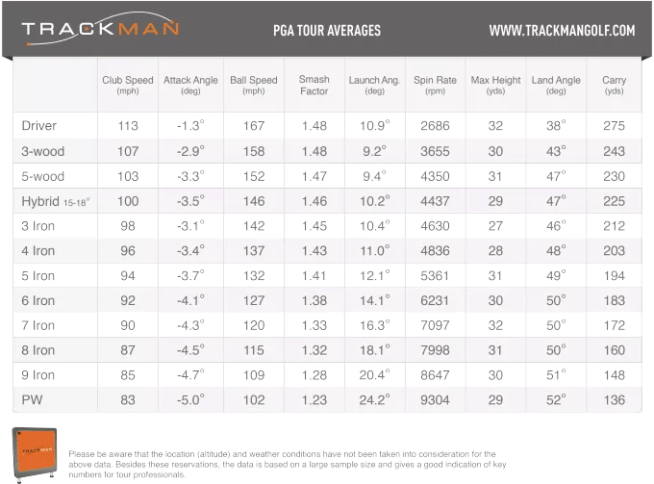
Now this is not to say that a tour player can’t ramp it up another gear if they felt like showing off. I’m sure most of them can squeeze out 10 extra yards on every club on this chart.
But mostly, when playing for the money, they don’t. Because winning money, titles, and shooting low scores doesn’t involve all that much ‘power’ hitting, especially with the irons.
Instead, it’s mostly situational. If I have a front pin with a hard green, I would go at it harder with the shorter club, maybe a 150 yard pitching wedge. This is so I could hit it higher and spin it more, enabling me to access that tough pin position.
The average drive on tour last year was 289 yards. I’d estimate the average tour player will hit their basic solid drive between 295-310 under neutral conditions. But you also have to add in the slight mishits, the rainy days, and the balls that land in the rough.
Official driving distance is only measured on two holes per round, which means you might get 50-60 shots in a year. A former tour pro told me he hit a tree branch off the tee that knocked his ball down, and it affected his average for the whole year by 15 yards. This put him near the bottom of the pack.
I blame it on TV coverage. How many times do you see TV reporting driving distance on an uphill into the wind hole? A good drive might only yield 250 – and that isn’t exciting.
But then on the next hole when they come back down the hill with the wind behind them, they all go 340.
What about this awesome drive from Dustin Johnson in Hawaii that everyone was talking about:
So the drive went 433 yards. But he picked up 25 yards for elevation, 25 for wind, and another 45 for extra roll. That’s 95 extra yards, putting the actual distance of the drive under neutral conditions around 340-345.
And this is about DJ’s average ‘big’ drive when he swings harder, at around 125 mph. Maybe 126 or 127.
So next time the announcer says that someone is hitting a 5 iron from 223, keep in mind that it’s mostly conditions, and note where the ball actually carries.
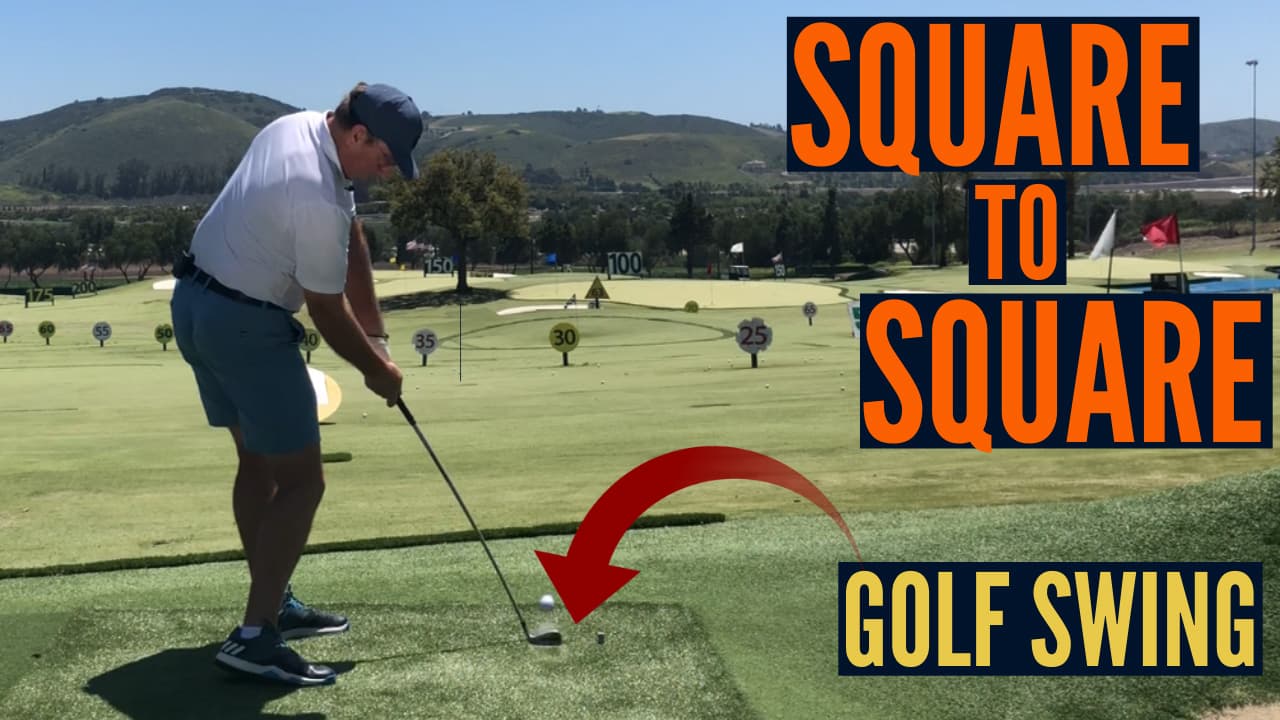
The SQUARE to SQUARE Golf Swing!
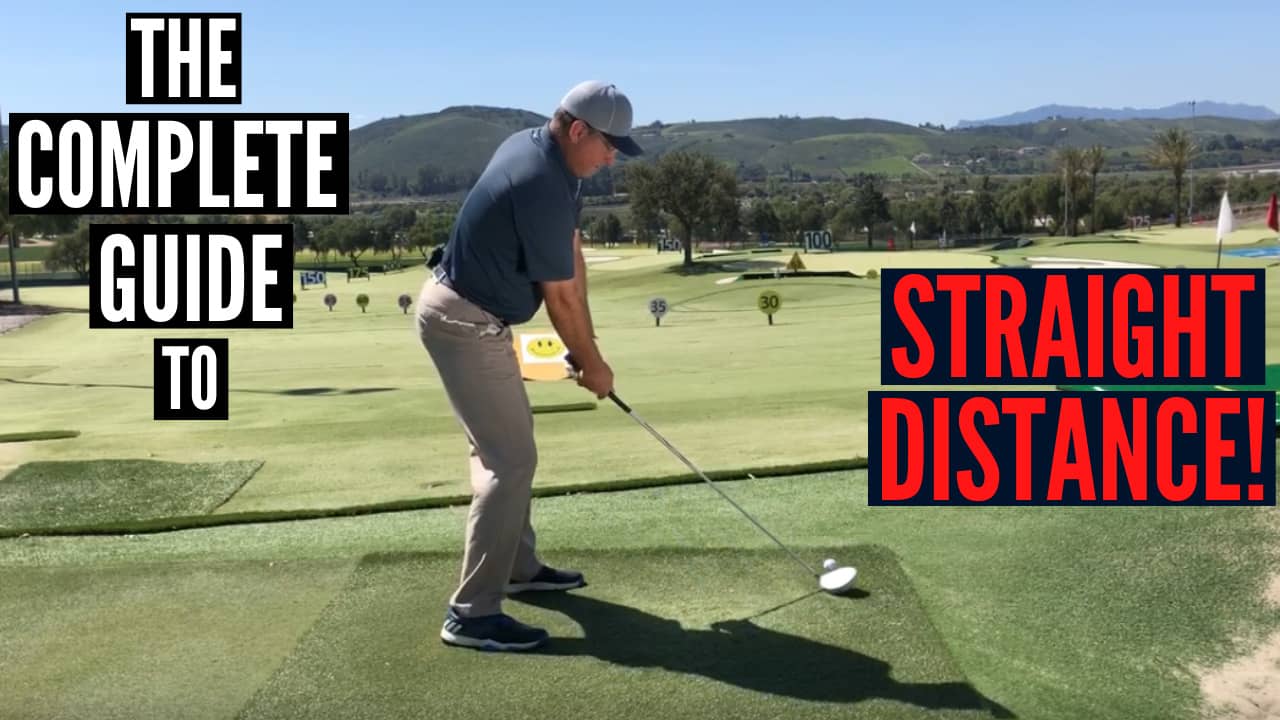
Steve’s Guide to Straight Distance!

Mike Austin Swing: When Does the Release Start?

Add Driving Distance by Analyzing the World’s Longest Driver!

Mike Austin’s Secret Release Move to Multiply Your Clubhead Speed
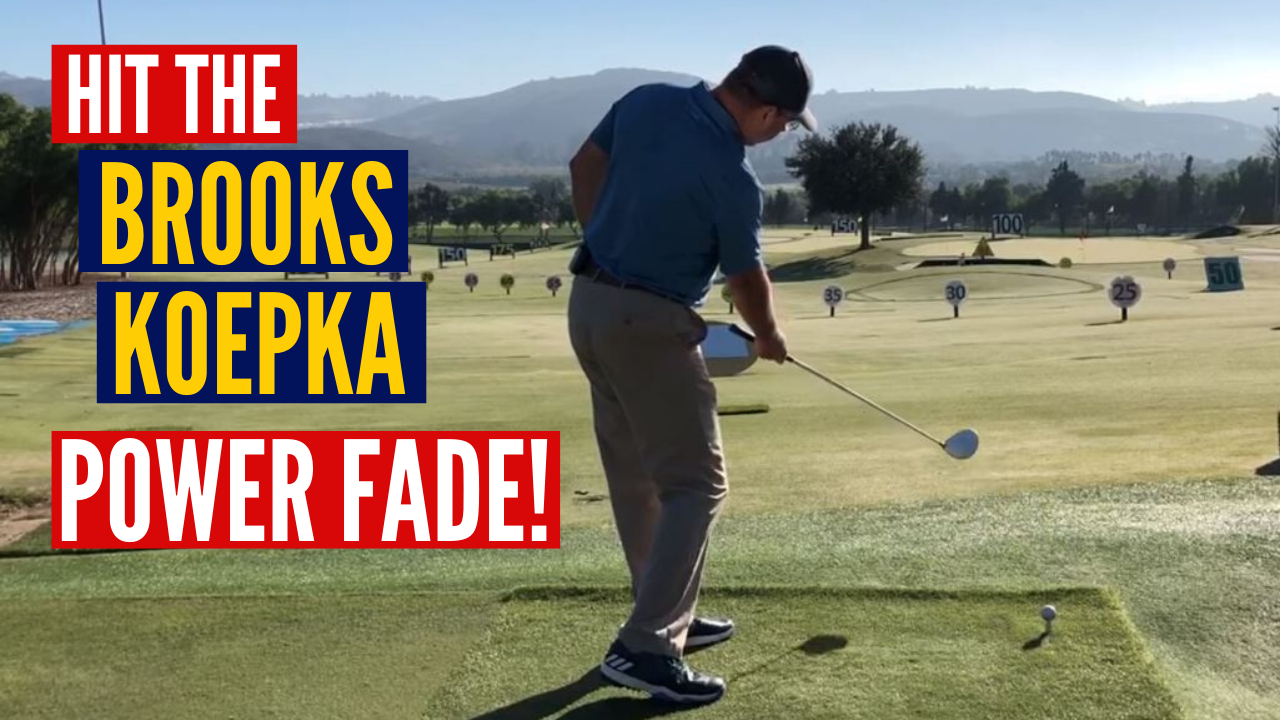
Learn to Hit a Brooks Koepka Power Fade!

Unlock the POWER Muscles in Your Golf Swing!

Master the Swing Plane and Handle Path for Increased Distance and Accuracy!
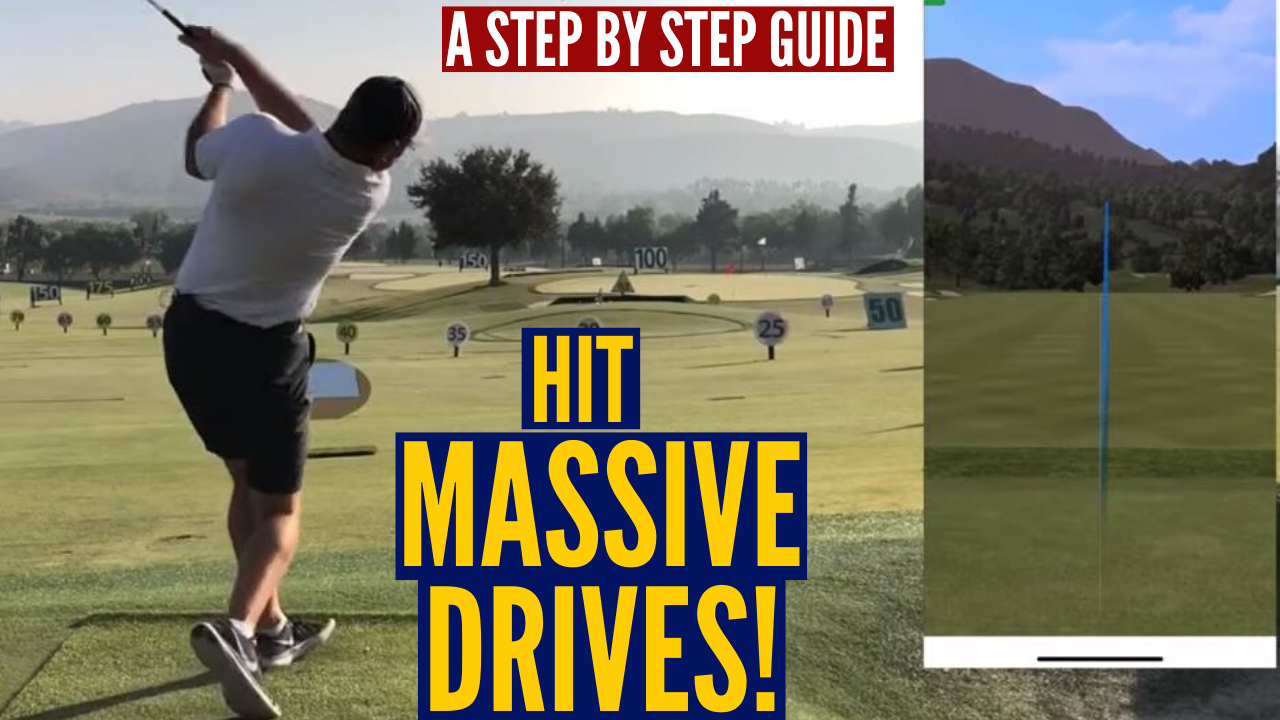
How to Hit Massive Drives! A Step by Step Guide
Acceleration graph of hips, chest, arms, and clubhead in a pro golf swing.
Real-time Trackman data now available to TOUR pros during practice rounds

Change Text Size
Real-time Trackman data is now available to all PGA TOUR players during tournament practice rounds.
Beginning each Tuesday around noon through the end of the day Wednesday, players will have access to their data from every tee shot using the Trackman Golf Pro app. Once a player tees off, their data will auto-populate into the app. Data is not available on tournament days.
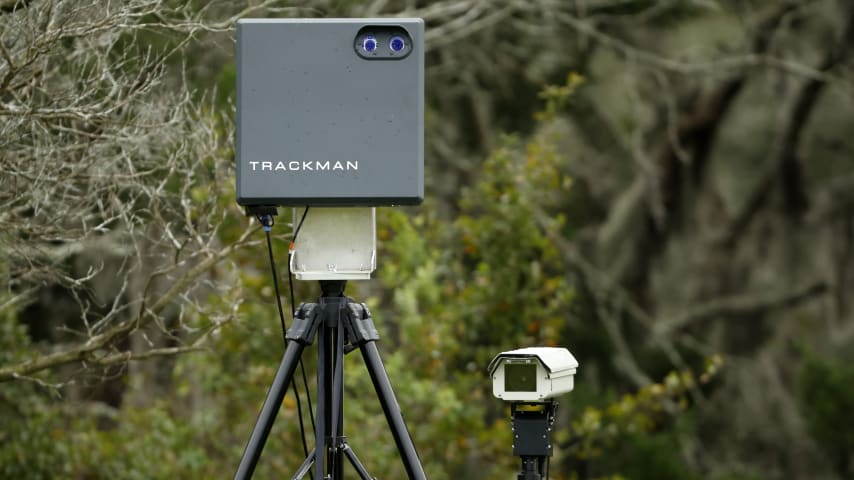
Trackman and Shotlink equipment at the RSM Classic. (Cliff Hawkins/Getty Images)
The feature debuted at THE PLAYERS Championship earlier this year and was made fully available during the Wells Fargo Championship last week. The service is exclusive to the PGA TOUR.
“What we’re trying to accomplish is give more players more information quicker so they can see how their ball is reacting in live conditions,” said Ken Lovell, PGA TOUR Senior Vice President Golf Technologies.
Users will be able to see the following metrics: ball speed, height, launch and land angle, spin rate, carry distance and curve. Two new metrics are also available: carry (actual) and landing angle (actual), allowing players to see exactly how much the uphill or downhill impacts their carry distance and landing angle.
This data is available to players, caddies, coaches, and equipment manufacturers. Only users who have been granted access will see the Practice Round option in the app. Spectators and other Trackman users will not be able to access the data. Users must be near the tee and have the app open before the shot is hit. The data can then be tagged by club and saved for review.
The hope is to streamline the process for players who would like to factor data into their decision-making, Lovell said. They’ve seen an increased demand for Trackman data on the course – many players even carry their own Trackman devices during practice rounds. This latest development will allow players to see more advanced data without having to carry a unit with them. The data comes directly from the 36 Trackman units (one at every tee box and green) that are used during competition.
“For us it’s all about helping players create a better game, achieve better results and optimize performance,” said Bernd Linde, vice president of marketing for Trackman. “We had the units standing on the course and it was generating a lot of data, but we weren’t sharing the data. Now we are. We just want to help the players.”
It’s already proved valuable for Hunter Stewart, a consultant who works with numerous players on the PGA TOUR, including Maverick McNealy, Trey Mullinax, Matthew NeSmith and Scott Stallings. Stewart said it’s been a helpful tool for club testing and cataloging, as many players “don’t exactly swing it on the driving range how they do on the golf course.”
“It’s just another nice tool in the toolbox to make better informed decisions, whether that’s club changes or figuring out how far the ball is going in a practice round in regard to weather,” Stewart said. “It just helps streamline their prep process and it’s immediate feedback. It’s definitely an asset.”
Trackman and the PGA TOUR are expected to roll out more features over the coming months, including the addition of approach shots. Normalization will also be added, allowing the user to see how changes in altitude and temperature affect the ball and how the ball would've reacted in calm conditions.

Spin Rates in Golf: What you Need to Know
If you’re like most golfers you want more distance off the tee and more backspin with your wedges . Both shots look great and make you feel like you’re ready to tee it up with the best player in the world.
Does that sound about right?
To get more distance and more backspin, you need to focus on something not enough golfers think about – spin rates . While most of us worry about buying new clubs and working on our swing at the range constantly, spin plays a big role in every shot, with every club you hit.
To better understand spin rates in golf, we’ll break down how spin impacts driving distance, backspin, and other areas of your game. By the time you’re done reading this blog post, you will have all the tools to assess your clubs and make changes to shoot lower scores.
Spin Rates in Golf
If you’re like a lot of golfers, I’m sure you’ve asked, “What is a good spin rate in golf?”
It’s a good question because spin plays a big role in distance and height of your golf shot. But the answer for “good” spin rate is tough to answer because of the complexity of golf.
Spin is something that more golfers need to consider as it can have a monumental impact on your game. Instead of telling you a “good” rate, you need to understand spin rates on different types of golf clubs. As you’ll see below, spin rates for woods vs. irons vs. wedges are quite different.
Spin Rate Definition
The spin rate is simply the amount of spin that occurs right after you hit a golf shot. This is measured in RPM and ranges depending on the club you’re hitting.
Here are two rules of thumb when it comes to spin:
- The higher lofted club you use, the higher the spin rate. That’s why your wedges spin much more than your long irons.
- The more speed you have, the more spin you get. That’s why it’s so important to accelerate through the golf ball to generate spin. And why a lot of amateurs struggle to get much backspin on shots within 125 yards like a professional golfer does.
If you have too much spin, your golf ball will go too high and not travel as far. While too low of spin will keep the ball flight down and lose accuracy.
The goal is to find the perfect balance of spin with every shot to hit it long and as straight as possible. The good news is that different clubs and shafts are made for all types of swings and can help you find the right balance.

How to Measure Spin Rates
To measure your spin rates, you will need to use a launch monitor. But not just any monitor as not all of them have spin rates or spin axis data.
While some personal launch monitors deliver this type of data ( click here to read our favorite launch monitors ), not all of them do. Sometimes, you will need to get fitted with a professional club fitter with higher end tech that can measure more swing data like spin rates.
Spin Rate Averages (Men and Women)
Spin is huge when it comes to driving the golf ball . If you want more distance than ever, you need to dial in your spin rates.
One of the biggest mistakes a lot of golfers make is playing clubs and shafts that don’t match their swing. This creates too much spin which reduces total carry distance and total distance.
According to Trackman (one of the most trusted sources in golf), here are the averages for different types of male golfers when using a driver.
- PGA Tour: 2686 rpm
- Scratch of Better: 2896 rpm
- 5 HCP: 2987 rpm
- 10 HCP: 3192 rpm
- Average Golfer: 3275 rpm
- Bogey Golfer: 3127 rpm
While here are the stats for female golfers:
- LPGA Tour: 2611 rpm
- Scratch or Better: 2831 rpm
- 5 HCP: 3027 rpm
- 10 HCP: 3207 rpm
- 15 HCP: 3287 rpm
Needless to say, spin plays a big role in getting the most out of your long game. Here’s what a Trackman master fitter (Christoph Bausek) said about the importance of spin with drivers.
“It is fascinating how much the spin rate can change the flight of the golf ball. It often happens that a student can improve their total distance of a drive by more than 30 yards within a couple shots.
Spin rate is mainly produced by spin loft, speed, friction, and centeredness of impact. Vertical gear has an enormous influence on drivers. If a golfer understands how spin is produced, they will also have a big advantage in their short game.”
So, what is a good driver spin rate?
Depending on which club fitter you talk to, it ranges from 2000 to 3000 RPM ( while others would argue 1700 to 3500). I know it’s a broad range, but there are tons of factors to consider including age, gender, swing speed , club, shaft, and ideal shot shape/trajectory.
Fairway woods spin more as they have more loft than a driver. Hitting a 3 wood usually puts spin in the mid 3000 range, while a higher loft five wood about 4300.
Spin Rate in Irons
So, what is a good spin rate for irons?
Remember our first rule about spin – the higher the loft, the higher the spin rates . Since irons have much more loft than drivers and fairway woods, they will spin more.
A good rule of thumb is to take the iron you want to measure and multiply it by 1000 to determine a “good” rate. For example, if you’re hitting a 7 iron, you want the spin rate to be around 7,000rpm.
Just like when you’re hitting your driver, too much spin will lead to loss of distance as the ball will travel too high. While too low of spin will make the trajectory much lower and make it nearly impossible to keep your approach shots on the dance floor.
Spin Rates in Wedges
The final clubs in your bag are the wedges, which have the highest amount of spin (as they have the most loft). These clubs don’t travel near as far but spin a ton, which is why you can get backspin or the “one hop and stop” shots on the green.
Spin rates vary based on swing speed, golf ball, loft of wedge, and type of swing, but generally range from 8,000 to 11,000rpm. Hitting wedges is where things get tricky as some golfers try to actively remove spin as they generate too much. That’s why you see a lot of PGA Tour players hitting knockdown shots to remove spin and not suck their golf ball off the front of the green.
If you want to remove spin with wedges, simply choke up 1-2 inches and take an extra club . It’s better to swing at 80% effort as you will likely make better contact and the ball won’t spin as much. Plus, don’t forget to check out the golf ball spin chart below to see if your ball is adding too much spin.
Some players swear that rust on a wedge will add spin. Read our full article to find out if rust on a wedge really adds spin .

FAQs About Spin Rates
Do you have more questions about dialing in your spin rates? If so, we have answers below.
Should I get professionally fit?
Not all golfers need professional fittings for their clubs. I would argue that the driver is the club you need to prioritize with spin rates more than anything else.
Since your driver sets up most shots on par 4s and 5s, it’s essential to play a club that suits your game. Otherwise, you’re leaving tons of distance on the table and making golf much harder on yourself.
How do I buy the right golf ball for spin?
Golf balls also play a pivotal role in spin.
Some are rock hard and minimize spin while others are soft and increase spin. This 2018 article from Golf Digest makes it easy to see how different golf balls spin based on spin rates and launch angles. Make sure to see how your golf ball impacts spin.
Does a stiffer shaft reduce spin?
This is a great question as your golf gear directly impacts total spin.
Right before writing and researching this article I had a professional outdoor fitting with Callaway. I wanted to ensure I got the right club head and shaft for my Rogue ST driver and will say it made a huge difference. Based on my driver swing speed (about 110mph) and swing, I got fitted for the Triple Diamond model with a heavier, stiffer shaft than normal (70 grams, X-stiff).
When you do a fitting and can see the trajectory plus spin numbers, it’s eye-opening! Other club heads and shafts added way too much spin and killed distance. While other shafts were too stiff (like the Tour X-stiff) and made the ball go too low. That’s why it’s so important to find the right balance between trajectory and spin.
Yes, a stiffer shaft will lower spin rate and launch. (Go here to read our full article on regular vs stiff flex shaft .) But the clubhead also plays a role too.
How do I reduce driver spin?
While switching clubs and shafts can help, there are more strategies as well. Here are three ways to lower spin rate with your driver:
- Tee it up higher . This will increase the distance the ball is off the ground and promote a higher launch angle which should reduce total spin.
- Keep your weight back and don’t sway forward on your downswing. This will make sure you don’t chop down on the golf ball which will also increase your spin rates.
- Opt for heavier shafts to help flight the golf ball down and increase total distance.
Also, make sure to watch this Top Speed Golf YouTube video to learn more ways to lower driver spin (and max out distance).
What does high spin rate mean in golf?
A high spin rate leads to a higher launch angle. It will make it feel like your golf ball is floating in the heavens before dropping back onto the green. Your landing angle will be much higher and will land softer.
Conversely, a lower spin rate means the trajectory will be lower as will the landing angle. This is why you want less spin with drivers so they have a boring flight and not much backspin. This will help improve your carry and total distance off the tee.
What is a good spin axis in golf?
Spin axis is different from spin rates. The spin axis determines how much the golf ball curves left or right. According to Trackman ,
“A negative spin axis represents a ball curving to the left, a positive spin axis represents a ball curving to the right, and a zero spin axis represents a shot that has no curvature.
Spin axis is determined at impact and should remain the same throughout the flight of the ball. Even though wind may “push” the ball in different directions, the spin axis will remain unchanged. Spin axis is measured relative to the horizon.”
Is more spin better in golf?
Yes and no, depending on the club you’re hitting. While you want more spin with wedges and irons, too much spin with your driver will limit distance off the tee. The basic rule of thumb is the higher average spin with driver equals a lower average distance .
Plus, don’t forget that your swing speed, clubs, and golf balls play a major role in spin. The faster you swing, the more spin you naturally create. The shafts/clubhead and ball will help add or reduce spin depending on the equipment you use.
How do you reduce spin?
If you need to reduce spin when you’re playing golf, for example, windy conditions, there are two things you can do. To reduce spin, remember our two rules for the beginning – more loft and more speed equals more spin.
If you’re out on a windy day , especially when hitting into the wind, you want to reduce spin by using less club. Or, if it’s very windy 2-3 clubs. This will mean you’re using less loft which will also spin less. Plus, a shorter follow through will help keep the ball down and under the wind.
Additionally, never forget the famous golf tip, “When it’s breezy, swing easy.” Now that you know about spin rates, you know that this tip makes perfect sense. By swinging slower, you will have less clubhead speed and thus, less spin on the golf ball so it won’t get as affected by the wind.
Remember these two rules when you’re playing golf in the wind.
Final Thoughts
If you aren’t breaking 90 yet, spin rates aren’t the biggest deal. But as you become more skilled, having the right golf clubs and correct golf shafts to get the ideal spin rates is pivotal to distance and accuracy.
Don’t let your clubs hold you back from playing your best golf!
Once you can shoot in the high 80s (or low 90s) consistently, it’s a good idea to get fit for clubs. When you can test out different equipment with a launch monitor and certified club fitter, it makes it easy to see your spin rates. Plus, you can hit all kinds of different clubs and shafts to see how each impacts distance, accuracy, feel, and trajectory.
Overall, make sure your driver is dialed in above all your other clubs since it sets up so many holes. As you start shooting lower scores, make sure to regularly check your spin rates with irons and wedges too so you get the most from your swing.
Tour Championship
East Lake Golf Club
HOW SCOTTIE GOT SO GOOD

Worried your irons aren't spinning enough? Think again
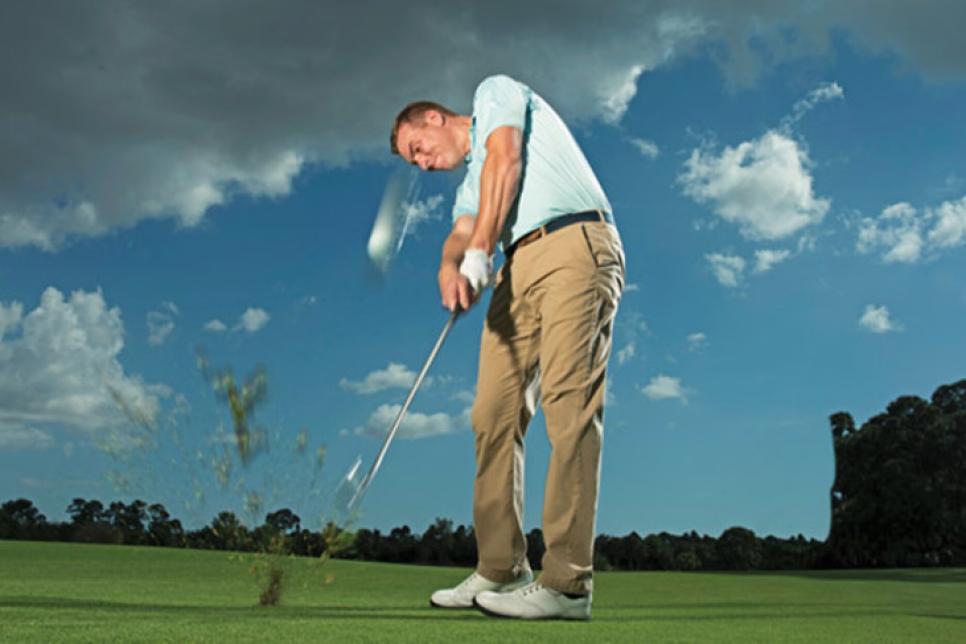
If you’re worried about not generating enough spin with your irons, you’re probably worrying about the wrong thing. (Of course, that doesn’t mean you shouldn’t be worrying about your irons because, well, golf.) The fact is our Hot List testing reveals data that suggests the amount of spin a typical iron needs to generate is getting less and less. But given where golf technology is taking us with modern iron design, less spin isn’t going to hurt you when it comes to holding greens.
Time was in the early days of launch monitors, fitters, teachers and eventually better players had a standing guideline for what was the proper amount of spin for each iron in the bag. Simply put, for whatever number iron you were hitting, the ideal spin for that iron was 1,000 times that number. Thus, a 7-iron should be generating 7,000 rpm, a 5-iron should be generating 5,000 rpm and a 3-iron … well, if you’re carrying a 3-iron, you should stop reading this and go get yourself a hybrid stat.
The idea behind the 1,000 multiplier was that amount of spin was a good gauge for what would be ideal to get a shot to hold a green. PGA Championionship winner Jason Dufner explained in a May 2013 article in Golf Digest about how it was his go-to self-check. “Jason looks at the numbers after every swing,” said Fordie Pitts, Titleist tour rep. “There’s not a lot of gray area with him.” Dufner was diligent, but of course was a bit more his usual laconic self, “It’s not a hard and fast rule, but it helps.”
In fact, if you look at some recent data from the PGA Tour, provided by Trackman, the average spin rates continue to hold to that 1,000X rule. According to Trackman, the average spin rate for a 9-iron on the PGA Tour is 8,793 rpm, for a 7-iron it’s 7,124 rpm, and for a 5-iron it’s 5,280 rpm.
Hot List 2024: Best Players Irons.
But for the irons being purchased and played today by average golfers, that rule seems to be fading away. Our testing shows just how much, thanks to numbers revealed by the Rapsodo MLM2 Pro launch monitor during our player testing sessions for the 2024 Hot List. It is a result of everything from swing changes (faster and faster speeds) to iron design (lower centers of gravity leading to higher launch angles) to stronger lofts, and even golf ball performance. It’s also because launch monitors are telling us more about ball flight, and particularly what a ball actually needs to do to keep it close to the intended target. That’s what become apparent to Brad Schweigert, chief product officer for PXG and a veteran club designer for nearly a quarter century.
“If you’re talking about a single-piece, solid body iron, like the forged blades you often see on tours or even our T irons, you can still see spin numbers like that,” he said. “Working with tour players on our staff, they're very cognizant of that idea, and they still want those numbers, and it can be hard to convince them they don’t have to get there, especially with where our technology can go.”
Hot List 2024: Best Game-Improvement Irons.
Schweigert’s point is that modern irons open up new ballflight rules, certainly when you’re talking about players distance and game improvement irons, but even with some designs being played at the tour level. The key are the increasing number of thin-faced irons and hollow body designs where a separate face can deflect at impact and create greater rebound.
“The more flex you get in the face, the higher launch you’re going to get, along with less spin, and that’s going to lead to a higher peak height and the kind of steep landing angle that’s going to hold the green,” he said. “As long as it gets to the right overall trajectory and it comes down relatively soft, it’s not like the spin rate doesn't matter so much anymore, but it’s not what you’re focused on. Because you can see landing angle and all the other launch parameters, at the end of the day, it often comes down to what is the peak height.”
We all know that terms like spin and launch angle and ball speed are routinely displayed in a typical launch monitor session. But increasingly, because of our understanding of ballflight, so too are attributes like “landing angle,” which refers to the trajectory of the ball coming into the ground, and “peak height,” which is the maximum height in a shot’s trajectory. Generally speaking, the ideal landing angle for an iron for an average golfer is around 40-50 degrees (steeper as the iron lofts get higher), although PGA Tour players will opt for even steeper landing angles to help them stop shots on typically firmer greens. Also, it’s worth noting that when you’re looking at your irons, you should focus on getting them to reach the same peak height, regardless of whether it’s a 5-iron or a 9-iron. That’s going to get your shots to hold the green more consistently.
When we ran simulations with Foresight Sports FSX Play software, we saw that a 7-iron that produced slightly faster ball speed and a higher launch angle (in other words, a stronger-lofted iron with a faster-flexing face) rolled out barely a foot longer than the same 7-iron that generated 500 rpm more spin. The key difference in how those two irons performed: The stronger-lofted iron produced more ball speed, which led both to a higher peak height and a steeper landing angle. Of course, as an added bonus, the stronger lofted iron also carried six yards farther. This is precisely why modern game-improvement irons are seeing significant distance gains for average golfers.
In our Hot List player testing we saw much lower spin rates than the 1,000X ratio, and those spin rates got lower as we moved from players irons to game improvement irons. The average spin rate for all 7-iron shots in the Players Iron category was about 6,000 rpm, but for Game Improvement irons, that spin rate dropped to around 5,300 rpm. Let’s remember that Game Improvement irons routinely have 7-iron lofts that are 4-6 degrees stronger than Players irons.
Coupled with their stronger faces, those stronger lofts are a big part of the reason that the old views about the ideal spin for your iron shots don't apply now. Since some of today’s 7-irons might have the lofts of a 6-iron (or maybe even a 5½-iron) from a couple decades ago, you might see spin rates that are much lower than the ideal 1,000X from past thinking. Still, if you are properly fit, that lower spin still comes with a similar or even higher launch angle. That combination, along with more ball speed because of the lower loft, is why you might hit your new irons farther while still being able to hold the green. The key is to focus not on spin, but on peak height and landing angle.
As Scott Felix of Felix ClubWorks, a perennial Golf Digest Best Clubfitter in America location, explains, “If we’re getting shots coming out of the air too shallow, it’s going to be harder to stop that ball. That’s why I’m always looking at things like peak height and landing angle to dial in the right iron so a player can hold greens.”
More from Golf Digest
Trending now.
Analytics 101
Spin rate in golf: how you can interpret your golf ball's spin.

When people say that golf is a game of control, they really mean that golf is a game of spin rate.
There are other data points that get much of the attention — carry yardage, ball speed and launch angle are three of the most highlighted, and we went over them in a broader analytics post you can find here — but an argument can be made that spin is the most underrated of all the variables in golf ball launch analytics. , what causes spin.
Every golf ball has somewhere in the neighborhood of 300-500 dimples with most balls being in the high 300’s. The dimples are there to help lift the ball by forcing airflow downwards so the ball can be pushed upwards. This is a process that sends the ball spinning backwards after impact at thousands of revolutions per minute.
The amount of spin in this process, which is called spin rate, is a major influencer of height and distance in a golf shot. With all other variables being equal, there are two primary factors that increase spin rate:
- More loft. A 7-iron would have more spin than a 5-iron, for example. A good analogy here is a tennis racket. If you wanted to hit a high-arcing shot where the tennis ball hits the court and stops, you would open the racket more towards the sky instead of pointing it perpendicular to the ground. The same principle is true in golf. The more the clubface is pointed up to you, the more spin you are likely going to apply. This is assuming all other factors in your swing stay the same.
- More clubhead speed. A stronger, faster player hitting a 9-iron will generally produce more spin than someone who hits the same 9-iron but swings slower. If you flipped a coin without much force, it may only go end-over-end a few times. With more energy, it can go end-over-end dozens of times.
While more loft and clubhead speed create more spin, that’s not always a desired outcome because more spin makes a golf ball go shorter and stop faster. Adding spin could be useful in some situations and harmful in others.

Understanding Spin Rate Numbers
So knowing this information, the obvious question to the spin rate equation is this: when you have just hit a golf shot and go to look at each data point, what does the spin rate number actually mean?
Let’s start with a simple example. When the average PGA Tour player hits a driver, their spin rate is typically in the area of 2,700 RPMs. For a player who is a scratch handicap, their average is right around 2,900 RPMs. If you are a 10-handicap, you are probably around 3,200 RPMs.

Of course the better players are swinging faster, but they are typically using less loft and stiffer shafts to produce a lower launch. They also have a shallower angle of attack into the ball and make contact higher on the clubface. All of that combines to make for less spin and longer carry distances.
(Pro Tip: If you spray your driver with something that will create a film, like Dr. Shoal’s odor spray, you can see exactly where the ball is hitting the face. Anything low on the face will usually create a lot more spin because the ball rolls up the face during impact.)
During quarantine Bryson DeChambeau posted an Instagram video where he hit a ball 203 mph with a driver that had less than 6 degrees of loft, but the ridiculous speed caused the spin rate to go all the way up to 2,976 RPMs, which meant the ball went nowhere near its potential yardage. It was during this time that he was testing new drivers and trying to see if he could hit the ball that hard while still maintaining a low spin rate.
“If spin rate was 2,000 (RPM’s), it would fly around 360 yards,” DeChambeau said in the caption.
Rory McIlroy was recently tested on a launch monitor and his spin rate came back at 2,297 RPMs. Being able to keep the spin that low while maintaining the other metrics is something players of his caliber are constantly checking.
Key Takeaways
The lesson here? If you want the ball to go far, your spin has to get lower while your launch angle either stays the same or gets higher. A simple rule of thumb is that you want the highest launch possible with the lowest spin possible, trying to marry the two to keep them both happy. This is a bit of an oversimplification when you get deeper into the analytics game, but it’s a solid starting point.
If you have a fast swing speed and your driver spin rate is something like 3,300 RPMs, it’s possible you are playing a driver with too much loft or you are using a shaft with too much flex. It can also mean a swing adjustment is necessary. One of the biggest adjustments is shallowing out your angle of attack into the ball and making contact higher on the clubface. This is where a PGA professional or trained club-fitter could be a valuable resource.
Of course it’s possible to not have enough spin with a driver — a slower swing speed player hitting an extra-stiff shafted driver with 8 degrees of loft won’t have success because the ball would barely get airborne — but the average amateur golfer is guilty of too much spin off the tee.
A recent study showed that the average golfer has a 3,275 RPMs driver spin rate with a 12.6 degree launch angle, when the optimal “robot in the lab” relationship is 2,300 RPMs of spin with a 14.7 degree launch angle. The difference is 30 yards lost off the tee. It goes to show you that most amateurs are launching the ball too low with too much spin. Getting to 2,300 RPMs of spin is a very low number and not possible for most. However, it’s reasonable to think most golfers could realistically take a few hundred RPMs off of their drives.
It should be noted that abnormally higher spin rates with longer clubs also come with uncontrollable ball flights. For someone who hits a massive slice, it’s not uncommon to see their spin rate over 6,000 RPMs. This is a glaring sign of loss of distance and direction off the tee.
This is key information when testing a driver as well. If you hit a ball with two different drivers and they both have the same launch angle but one has more spin, the one with less spin will typically go farther. It’s hard to overestimate the impact of equipment in this equation. A great swing with an ill-fitting club is not going to work very often.
Spin Rate for Other Clubs
Moving down throughout the bag, here are PGA Tour spin rate averages for other clubs:
- 3-wood: 3,655 RPMs
- 5-wood: 4,350 RPMs
- Hybrid: 4,437 RPMs
- 3-iron: 4,630 RPMs
- 4-iron: 4,836 RPMs
- 5-iron: 5,361 RPMs
- 6-iron: 6,231 RPMs
- 7-iron: 7,097 RPMs
- 8-iron: 7,998 RPMs
- 9-iron: 8,647 RPMs
- Pitching Wedge: 9,304 RPMs
While these are professional averages, a normal player doesn’t generate the same speed. That means they would be likely aiming at spin rate ranges that are lower than a pro’s.
Unlike with the driver where amateurs have more spin than professionals, amateurs generate less spin with their irons than professionals. This is mainly because irons require more of a downward strike. For pros, a driver angle of attack is -1.3 degrees while a pitching wedge would be closer to -5 degrees. So the faster swing speed and increased loft combine with a more downward blow to create more spin.
Of course, a pro wants their irons to stop as quickly as possible. That being the case, there is much less of an incentive to reduce spin.
An Example of Iron Spin Rate
A pro swings their 6-iron around 92mph to get to 6,231 RPMs. Here are some ranges to keep in mind for more normal swing speeds:
- Swing speed between 84-91mph: 5,300-5,750 RPMs, launch angle of 15-17 degrees
- Between 75-83mph: 5,000-5,500 RPMs, launch angle of 15-18 degrees
- Between 65-75mph: 4,700-5,250 RPMs, launch angle of 16-19 degrees
- Less than 65mph: 4,400-5,000 RPMs, launch angle of 16-19 degrees
This is just for a 6-iron, but looking at the PGA Tour averages and seeing what your swing speed is with each club, you will notice the typical amateur range is normally 300-1,200 RPMs or so below that, particularly for the highest lofted clubs. The more speed you are producing, the closer to the top of the range you would expect to be.
Final Thoughts
One of the most important things to keep in mind when you are looking at spin rate is that outliers are cause for concern. If you see an 8-iron come off at 4,000 RPMs, that would be cause to look deeper at your equipment or technique. There isn’t one set spin rate to reach for every club. However, getting within a reasonable range given your swing speed and marrying it with the proper launch angle is vital.
We will have a more in-depth look at spin rates in the future. Hopefully this intro is a good foundation for understanding one of the most important metrics in golf ball launch analytics.

Sean Fairholm
Similar posts.

Pierce Reiten
Pga tour stat leaders off the tee in 2023 so far.

Brendon R. Elliott
How much spin should each golf club produce, the optimal max height when hitting your driver, reserve today..
Unlocking Distance: Launch Conditions and Angle of Attack

Bringing you insights from the PING Proving Grounds, where our talented team of engineers, researchers, fitting experts and data scientists design and develop the newest product and fitting technologies to help you play better. Using the most advanced tools available, we’ll explain and explore the science behind golf-equipment performance. We’ll separate fact from fiction with the goal of helping you make informed decisions when choosing the PING equipment best suited for maximizing your performance.
By Chris Broadie
We’ve long known that higher launch and lower spin is a powerful combination for generating consistently long and straight tee shots. A key factor in optimizing launch conditions, one often overlooked, is angle of attack. Improved diagnostics and trajectory modeling shed new light on the importance of angle of attack in maximizing driving performance.
In the graph above, with a 167-mph ball speed, carry distance is optimized with a 17° launch angle and a spin rate between 2,000 and 2,500 rpm. Players with slower ball speeds may need a little more spin to keep the ball in the air to maximize carry. The net effect stays the same, though: very high launch and relatively low spin optimize distance.
In 2018, the highest average launch angle on the PGA Tour belonged to Sam Saunders at 14.7°. If a 17° launch angle maximizes distance, why does no one on the PGA Tour launch their driver that high? The answer is angle of attack.
To explain why, we first need to understand ball-flight laws. Ball-flight laws determine, for a given angle of attack and loft presented at impact, how high the ball will launch. If launch angle was determined entirely by the club face, then the ball would launch with exactly the presented loft at impact (100% toward the face). If launch angle was determined entirely by the path of the club, then the ball would launch along the angle of attack (0% face). As a sanity check, we know that a negative angle of attack does not launch the ball into the ground, so launch angle should be primarily determined by the loft at impact (>50% face). In fact, according to research conducted at the PING Proving Grounds, on a driver the ball will launch 85% toward the face.
According to Trackman, PGA Tour golfers have an average angle of attack (AoA) of -1.5° on a driver. For a -1.5° AoA and desired launch of 17°, the delivered loft at impact needs to be 20.25° in order to satisfy our 85% ball-flight laws. (Explanation: The presented loft is 21.75° greater than the AoA, the ball launches 85% of the way toward the face (21.75° * 85% = 18.5°), which results in a 17° launch (-1.5° + 18.5° = 17°).
However, this simply isn’t practical for a PGA Tour golfer. Hitting a ball at a “glancing” angle of 21.75° (20.25° delivered loft minus -1.5° AoA) reduces ball speed and would likely result in 4,500 rpm of spin. Therefore, the recommendation would be to try less loft, as this can result in a lower launch angle, less spin and greater ball speed. This now becomes an optimization problem to find the perfect loft. Through impact modeling and ball-flight simulation, we can evaluate all the potential lofts and pick whichever loft maximizes distance.
In our simulation, the launch conditions range from 171.3 mph ball speed, 3.8° launch angle, and 980 rpm spin at the lowest loft, 168.1 mph ball speed, 10.4° launch angle, 2,760 rpm spin at the optimal loft, and 157.2 mph ball speed, 20.5° launch angle, 5,450 rpm spin at the highest loft. Interestingly, the projected optimal launch angle of 10.4° and back spin of 2,760 rpm closely matches the actual PGA Tour averages of 10.9° launch angle and 2,686 rpm spin rate. The best golfers in the world, naturally, have gravitated toward the launch conditions that optimize performance for their given attack angle.
Unlike simple launch angle vs. spin charts, which would recommend more than 17° launch, this optimization provides data-driven analytics so a player can maximize performance. Based on the metrics gathered through player testing at the PING Proving Grounds, we can now project an optimization range based on angle of attack, an industry first, and ball speeds.
The general principal – that slower-ball-speed players need higher launch and higher spin while players with faster ball speeds require lower launch and lower spin – isn’t always correct. In the optimal launch and spin chart, in general, slower ball speeds and increased attack angles result in higher recommended launch angles. However, ball speed does not have much influence on the recommended spin rate; angle of attack is the primary source of change in the recommended spin rate.
Even though each angle of attack and ball-speed combination has a unique optimal launch and spin, this does not mean that each combination is equally good. Increasing ball speed has the obvious effect of helping the ball go farther. Similarly, increasing angle of attack also can help increase distance.
For instance, given a constant 160 mph ball speed, a -5° angle of attack optimally generates a 8.2° launch angle, 2,994 rpm spin rate and a 264-yard carry. With a +5° angle of attack we optimally get a 15.1° launch angle, 2,179 rpm spin rate and a 281-yard carry. Increasing angle of attack, for the same ball speed, can improve carry distance by 17 yards!
While swinging up on the ball can consistently increase carry distance for many golfers, you can find an optimal launch condition without changing angle of attack. Let’s say two players with the same swing speed but different angles of attack arrive at a PING Fitting Experience. Each player should walk away with different optimal launch and spin conditions, and different driver specifications, to enhance their individual driving performance.
As we advance our biomechanical understanding of why golfers move the way they do, we might find that certain movement patterns predispose themselves to different club deliveries, which may explain why PING Pro Lee Westwood has been very successful with a negative angle of attack, while other golfers have found success with a positive angle of attack. Instead of trying to force all golfers into a positive angle of attack with high launch and lower spin, we should customize our fitting methods to identify each player’s optimal launch and spin – and keep unlocking distance.
References: Andrew Rice on the TrackMan Blog (2017): What is Attack Angle?
Chris earned a Bachelor of Arts degree in mathematics from Cornell University in 2017. Chris researches club-ball impact and ball-flight physics, and helps develop new tools to analyze PING performance data. Chris is the lead data scientist behind PING ‘s innovative fitting applications; Ballnamic, Webfit, and the My Game Insights platform.
Find a PING Fitter Near You
The Straits Times
- International
- Print Edition
- news with benefits
- SPH Rewards
- STClassifieds
- Berita Harian
- Hardwarezone
- Shin Min Daily News
- Tamil Murasu
- The Business Times
- The New Paper
- Lianhe Zaobao
- Advertise with us
PGA Tour player blog: I’ve lived a lifetime in this one year, says Scottie Scheffler
- Scottie Scheffler
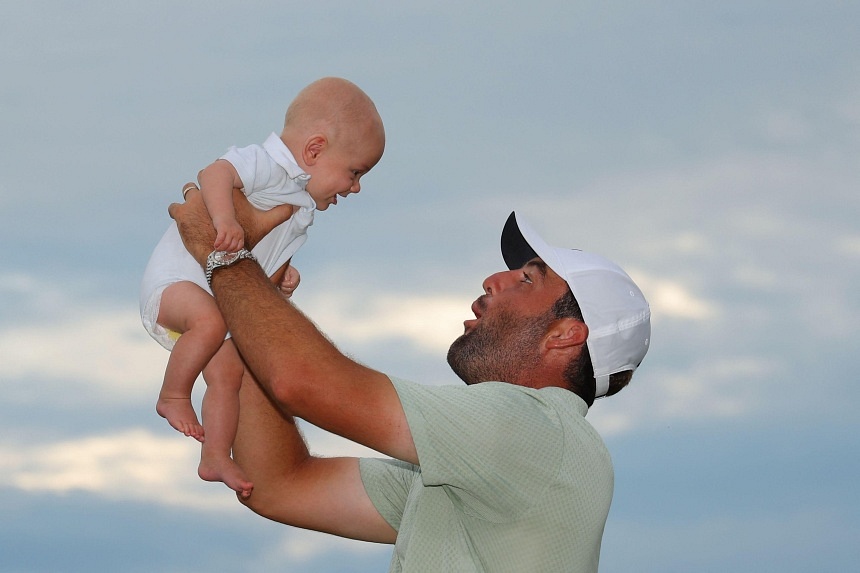
It’s a lot of fun. We’ve put in a lot of work to get to this point, and it’s been a long week. Right now, I’m just pretty tired, so I don’t really know how to put this into words. It’s a pretty special feeling to finally be holding this trophy.
All week, I tried my best to stay in the present and I did a good job of that. I think I handled it much better mentally. It’s unusual playing several rounds with a lead and holding a seven-shot lead after the first round is something I will probably never have at any other tournament. It’s a different feeling and I feel like this Tour Championship lasts longer than other tournaments.
When I look back now, I feel like I’ve lived almost a full lifetime in this one year. It just always comes back to my faith and that’s what keeps me grounded and keeps me in the right frame of mind. I’ve been leading the FedExCup points list for a long time, and to come in here with a little lead and be able to finish it off the right way is nice.
I try not to think too much about the past... but two years ago, it was pretty tough to have a good lead into the last round and then not playing my best and ended up losing. Last year I had an off week and it was disappointing, too. So to come in with a lead for the third time, and be able to finish it off is definitely pretty sweet.
I’ve been the Player of the Year on the PGA Tour the last two seasons and I haven’t left with this trophy. It leaves a bad taste in your mouth at the end of the year, especially when you’re starting the tournament ahead of people. So maybe the last couple years, I’ve put too much pressure on myself to perform... but this year I did a good job of just staying in it mentally and keeping my head down.
I got off to a good start in the final round and then I obviously had the two holes on No. 7 and 8 (where he made bogeys), and Teddy (Ted Scott, his caddie) did a good job of keeping me focused. I was able to hit a nice shot into No. 9 for birdie and it really changed the momentum.
Teddy gives me good speeches all the time. That is why he’s such a good caddie. I don’t think a day goes by that he is not giving me some decent advice or giving me a good laugh when I need it. He really is my biggest asset out there on the course. He gave me a nice pep talk on the back of No. 8 green because I kind of looked at him like, ‘man, I don’t know about this’. I was then able to hit a nice iron shot in there and got things rolling. It really changed the momentum of the round.
Overall, it’s been a great year. I’m proud of the results. It’s something I try not to focus too much on, but at the end of the day, being able to win tournaments is a great feeling, and it’s what we work towards, and to be able to have as many wins as I have this year is really special.
I’m looking forward to going home and getting rest for a week or so before I start prepping for the Presidents Cup because that’s a tournament that I really want us to go out there and win at Royal Montreal.
- Fans can watch the PGA Tour and Presidents Cup from Sept 24 to 29 on Mola and DAZN.
Join ST's Telegram channel and get the latest breaking news delivered to you.
- Golf tournaments
- Golf players
Read 3 articles and stand to win rewards
Spin the wheel now
Kirby Yates earns the save
Kirby Yates strikes out Brandon Drury to earn the save in the Rangers' 3-1 win
- Season 2024
- More From This Game
- Kirby Yates
- Texas Rangers
- in-game highlight
- Pitch Type: Four-Seam Fastball
- Pitch Speed: 93.1 mph
- Spin Rate: 2183 rpm
- Exit Velocity: -
- Launch Angle: -
- Hit Distance: 0 ft
- SI SWIMSUIT
- SUBSCRIBE NOW
Envelopes, Please: The ‘Other’ Awards From Highs and Lows of the 2024 PGA Tour Season
Gary van sickle | sep 4, 2024.

ATLANTA — We were a country divided. It was Coke vs. Pepsi, Ford vs. Ferrari and Tastes Great vs. Less Filling all over again.
Was Scottie Scheffler your Player of the Year in 2024 or was it Xander Schauffele?
It was too close to call until Scheffler finally tipped the scales by winning the 30-man corporate picnic known as the Tour Championship last week.
Purists favored Schauffele because he had a 2-1 edge in major championships. It was Schauffele’s PGA and British Open titles versus Scheffler’s Masters. Although Scheffler also won the Players, which ought to count as at least half a major by now.
But the Tour Championship was win No. 7 for Scheffler. He also snagged the Olympic gold medal. He was golf’s dominant force this year. He even set the all-time Tour scoring average for a season at 68.00.
You could argue for Co-Players of the Year because of this: Would Scheffler or Schauffele trade their year for the other guy’s? Not likely.
Thankfully, a seventh Scottie win seems to end debate, which is good because if we had to come up with a combo nickname for the duo such as Bennifer (Ben Affleck, Jennifer Lopez), Schauffeffler edged Scander and X-Scot in staff voting.
Crisis solved. As luminaries Peaches and Herb once noted, “Reunited and it feels so good.” Here are some other major award winners from The Year of Schauffeffler Scheffler:
The Winston Churchill Champion Orator
Rory McIlroy discussing the Olympics and Ryder Cup: “With how much of a sh-t show the game of golf is right now, we don’t play for money (in) the two tournaments that might be the purest form of competition.”
(Second shot: We need a “sh-t show” logo on golf shirts and hats. They’ll sell like … sh-tcakes!)
Most Arresting Event
Nobody has ever been charged with a felony during a major championship and gone on to win it but Scheffler had the chance. He was arrested for not obeying a traffic cop’s directions near the Valhalla Golf Club entrance in the early morning hours. Louisville police arrested Scheffler, booked him downtown and charged him with a felony. He somehow got back to Valhalla for his morning tee time and shot 66, the Round of the Year under the circumstances. Video evidence later exonerated Scheffler and all charges were dropped. The Scheffler Incident made this PGA Championship unforgettable but the event got even better thanks to a thrilling finish in which Schauffele holed a clutch putt on the last green to edge Bryson DeChambeau and Viktor Hovland.
(Second shot: Great golf, great drama, great police work. Well, two outta three ain’t bad.)
Revisionist History Cup
Awarded to the PGA Tour, which said University of Alabama sophomore Nick Dunlap’s AmEx win made him the youngest amateur to win on Tour since Chick Evans at the 1910 Western Open.
(Second shot: Geez, the PGA Tour wasn’t founded until 1968 but it’s taking credit for those old Western Opens? Is it also claiming responsibility for Portugal ending its monarchy that year?)
The Stroke of Genius Award
If the hardest shot in golf is the long bunker shot, try it from 55 yards on the 72nd hole at Pinehurst’s No. 2 Course to win the U.S. Open. Bryson DeChambeau floated a beautiful sand shot with his 55-degree wedge that trickled to a stop 4 feet below the hole. Then he holed the putt to win his second Open title. “That bunker shot was the shot of my life,” DeChambeau said.
(Second shot: It was close but that bunker shot possibly was bigger than the final-hole birdie putt holed by President Donald Trump in DeChambeau’s Internet episode of “Break 50” that gave the duo a score of 50 at Trump Bedminster.)
The Green Bib
Given to caddie Ted Scott, who has two Masters wins on Scottie Scheffler’s bag and two with Bubba Watson. That means only legendary Augusta caddies Willie Peterson (five with Jack Nicklaus) and Pappy Stokes (five with four players) have looped for more green jacket winners than Scott. “I’m pinching myself,” Scott said after Scheffler’s April win.
(Second swing: Pinch away, man. You’re aboard Secretariat. Enjoy every ride.)
The Golden Slide Rule
Beau Hossler bounced a shot off the back edge of the famed 17th green at TPC Sawgrass in the Players opening round the same day Ryan Fox made an ace there. Only one of those made history. Oddly, it was Hossler’s, whose shot was the 1,000th ball hit into the water at 17 during The Players, ShotLink reported.
(Second shot: This is fake math, people. ShotLink didn’t start tracking water balls at 17 until 2003. Sawgrass became the Players home in 1982, so that’s another 21 years and using historical average of 46 dunks per Players week, that 966 more sunken balls. Hossler’s shot was actually closer to being No. 2,000. And that’s not counting Angelo Spagnolo’s 27 water balls en route to a 66 on that hole in Golf Digest ’s ignominious 1985 World’s Worst Avid Golfer contest.)
The Lies, Damned Lies and Statistics Trophy
Awarded to Tiger Woods. The pros and cons of his year:
Pro: He played all four majors for the first time since 2019.
Con: He missed the cut in three; shot a cumulative 44 over par and averaged 75.6 strokes per round.
Pro: He set a Masters record by making his 24th consecutive cut, moving ahead of Fred Couples and Gary Player.
Con: His 304 total was his highest in 26 Masters appearances.
Pro: He shot 156 at Royal Troon in the Open, tying his highest score as a professional, but it was one stroke lower than his highest score ever, 157 at Bay Hill in 1994 when he was a high school senior. Take that, kid!
Con: He played the final round with amateur Neil Shipley, who shot 73 to Tiger’s 77. In a match of cards, Shipley wins, 2 and 1.
Pro and Con: Tiger is now a PGA Tour Policy Board player director and heavily involved in the tedious, never-ending (doomed?) negotiations with PIF (the Saudi money funding rival LIV Golf).
Pro: He got a $100 million loyalty bonus/equity share from PGA Tour Enterprises Inc., the Tour’s new for-profit venture.
Con: Figuring the highest IRS personal tax rate of 37%, he kept only $63 million of that bonus.
(Second shot: Only $63 mill? C’mon, a private jet’s gotta eat, too.)
Best Farewell Tour
Take a bow, personable club pro Michael Block. He had his 15 minutes of fame in 2023 after his star turn at the PGA Championship that featured a final-round ace while paired with Rory McIlroy. Block cashed in well. He even snagged a Charles Schwab commercial—surely a club-pro first—and three more invites to PGA Tour events this year, which ended as three more missed cuts.
The afterglow of his fantastic, clutch up-and-down on the 72nd hole at Oak Hill that earned him a return invite to the PGA Championship didn’t last long at Valhalla last May. He made a quad on the second hole and missed the cut. Probably only Scottie Scheffler had less fun in Louisville.
(Second shot: Looks like Blockie’s Eras Tour is over. But he’s 48 and the senior circuit is not far off. He might be able to beat a few of those guys. His more realistic long-term outlook? Social Security.)
The Pet Rock Merchandising Award (Gold Medal)
T-shirt featuring jailbird Scottie Scheffler mug shot) during PGA Championship week: “Making orange great again.”
(Second shot: Hey, it’s always been great in sherbet and Hostess cupcakes.)
The Francis Ouimet Giant-Killer Cup
This prestigious award Dunlap, the reigning U.S. Amateur champ. He shot a third-round 60 and holed a 6-foot putt on the 72nd hole to win the American Express, the tournament long known as the Bob Hope Desert Classic. Dunlap became the first amateur to win a PGA Tour event since Phil Mickelson in 1991, a special feat.
Said Dunlap: “If you told me Wednesday night that I would have a putt to win this golf tournament, I wouldn’t believe you.”
(Second shot: Nick, what if we also told you via email how to sell your timeshare and buy life insurance in case of a robot attack? Would you believe that?)
Rookie Card of the Year
It’s another award for Dunlap, who looks like the real deal. Dunlap turned pro after winning the AmEx in January, jumped onto the PGA Tour and came from behind to win the Barracuda Championship in July—the first player in Tour history to win as an amateur and a pro in the same year. “I never thought I would have my name next to that,” Dunlap said after his victory in Truckee, Calif. The triumph was worth $720,000, nearly half as much as the $1.5 million check he couldn’t accept for winning the AmEx, money that went instead to runner-up Christiaan Bezuidenhout.
(Second shot: Pay the man, Shirley.)
The Nick Dunlap Honesty Cup
This Dunlap guy is everywhere. So let’s name an award after him for offering the Most Honest Quote of the Year. After winning the AmEx as an amateur, the Alabama sophomore was asked if he had homework from school.
“Yes,” Dunlap answered. “Probably won’t do it, though.”
(Second shot: Wait, athletes at SEC schools have homework?)
The Nick Dunlap Honesty Cup, non-Dunlap Division
The winner is Akshay Bhatia, who left his 32-foot putt on the Rocket Mortgage Classic’s 72nd green 4 feet short, then missed the next one, handing the title to a surprised Cam Davis. Said Bhatia: “Just a little bit of nerves, honestly. I’m human.”
(Second shot: You’ve gotta respect that admission. Not to make excuses for Bhatia’s miss but we did notice some clouds moving carelessly during his backstroke.)
The Shlabotnik Cup
This award, which goes to former Ryder Cup star Anthony Kim, is named in honor of “Peanuts” character Charlie Brown’s favorite baseball player, Joe Shlabotnik, who had a career .004 batting average. Kim, 38, stepped away from golf in 2012 (when the award-winning Dunlap was 10 years old) for undisclosed reasons. Kim returned in March and joined LIV Golf. “Eleven years is a long time,” admitted Kim. His results reflect the layoff. His average finish in 10 54-man events is 47.0. He has a 47-477-6 mark, based on how many players he finished ahead of (47), behind (477) or tied (6). That gives him a won-loss average of .094.
(Second shot: Well, his last LIV finish was 36th so he’s trending upward. But at least his average is way better than Shlabotnik, who later tried managing, fyi, but was fired by the Waffletown Syrups.)
The Glenfiddich Award
Scotland’s Robert MacIntyre had a remarkable summer. He scored his breakthrough first PGA Tour victory at the RBC Canadian Open with his dad, Dougie, the greenskeeper at Glencruitten Golf Club, as his caddie. They shared an emotional embrace after the win. Barely a month later, he was in contention at the Scottish Open. With the vocal galleries supporting him, MacIntyre delivered his best golf and watched a 22-foot birdie putt barely topple into the cup on the final green for a one-shot win over Adam Scott. “It’s the one I wanted and the one I got,” Robert said. The ensuing celebration was reportedly also award-worthy. “I’m not a big drinker but when you get a moment like that—a childhood dream and a lifetime goal—and you’ve got family and friends that have backed you since you were a young kid, I think it was quite right to go absolutely wild.” And, he added with a smile, “I think we’ve done a good job of that.” Because of the party, he moved his Open Championship pre-tournament press conference from Monday to Wednesday.
(Second shot: Lang may yer lum reek, lad. Old Scottish toast translated, Long may your chimney smoke.)

The Van de Velde Cup
The “winner” is former Duke University star Max Greyserman, who had one hell of a week during the Wyndham Championship. Greyserman enjoyed a second-round 60 at Sedgefield Country Club and had a sizable lead in the final round until his drive caromed high off a cart path and out of bounds at the 14th hole, causing a quadruple-bogey 8. Then he four-putted for double bogey at the 16th. The double disasters set up England’s Aaron Rai to notch his first win. “Obviously, stuff happens in golf,” Greyserman said.
(Second shot: When Double Stuf happens, you hope it comes between two Oreo wafers.)
The Pet Rock Merchandising Award (Silver Medal)
T-shirt featuring jailbird Scottie Scheffler mug shot during PGA Championship week: “Orange is the new green.”
(Second shot: Does anyone really want to see the Masters award The Orange Jacket? Anyone? Bueller?)
The Glen Campbell Memorial “By the Time I Get to Phoenix” Award
It was 8:25 a.m. when Lucas Glover, still in his hotel room, answered his cell phone and was notified by a PGA Tour rules official that he was due to tee off in the WM Phoenix Open’s first round at 8:26, one minute later. Dangnabbit! The rules allow a player to tee off up to five minutes late, which comes with a two-stroke penalty, but Glover couldn’t make it in time for that. He withdrew and admitted he’d read his tee time wrong, a rookie mistake that a 44-year-old Tour veteran wondered how he could have made.
“I'm kicking myself but laughing at myself at the same time,” Glover told Golf Channel.
(Second shot: Glover ranks 14th in Approaching the Green stats. In Reaching the First Tee, pencil him in for DFL—that’s golfspeak for Dead Last.)
The Silver Calculator Award
Xander Schauffele won explaining how he had to factor in Denver’s mile-high altitude during the BMW Championship there to determine yardages before every shot: “I went to San Diego State, so it’s the most math I’ve done in a while.”
(Second shot: Is San Diego State in the Big Ten Conference yet?)
The Dan Rather Memorial Inquisition Chalice
This award for the most inane media question was earned at the FedEx St. Jude Championship after Scottie Scheffler talked about showing his Olympic gold medal to friends and fans before the event in Memphis and how much reacted to seeing his medal.
Media genius: “Did you use it as a ball marker at all?”
(Second shot: What he should’ve asked as a topper follow-up—“How far can you throw it?”)
The Pet Rock Merchandising Award (Bronze medal)
T-shirt featuring jailbird Scottie Scheffler mug shot during PGA Championship week: “Straight outta Valhalla.”
(Second shot: Per the late Warren Zevon’s song: “Send lawyers, guns and money.”)
The Job Placement Trophy
Phil Mickelson has zero LIV Golf wins and only three top-10 finishes in three years.
Mickelson recently hinted that he might retire if his LIV Golf play doesn’t improve. His reported $200 million LIV deal expires after next season and his dismal average finish this year is 36.1 (out of 54 players). “I see glimpses of being able to compete but I’m also realistic,” Mickelson said. “If I’m not able to, I’ll step aside.”
(Second shot: A legit question is, What will Phil do next? LIV broadcast commentator? Head negotiator in the PGA Tour framework agreement talks? Male model for AARP?)
The Dr. Richard Kimble Right Stuff Award
Scottie Scheffler, after video evidence revealed how the Louisville police’s description of his PGA incident didn’t match the officer’s account and charges against him were dropped: “I did not want to pursue legal action against Louisville because at the end of the day, the people of Louisville would have to pay for the mistakes of their police department. And that just doesn’t seem right.”
(Second shot: Justice prevails. Court adjourned.)

GARY VAN SICKLE
Van Sickle has covered golf since 1980, following the tours to 125 men’s major championships, 14 Ryder Cups and one sweet roundtrip flight on the late Concorde. He is likely the only active golf writer who covered Tiger Woods during his first pro victory, in Las Vegas in 1996, and his 81st, in Augusta. Van Sickle’s work appeared, in order, in The Milwaukee Journal, Golf World magazine, Sports Illustrated (20 years) and Golf.com. He is a former president of the Golf Writers Association of America. His knees are shot, but he used to be a half-decent player. He competed in two national championships (U.S. Senior Amateur, most recently in 2014); made it to U.S. Open sectional qualifying once and narrowly missed the Open by a scant 17 shots (mostly due to poor officiating); won 10 club championships; and made seven holes-in-one (though none lately). Van Sickle’s golf equipment stories usually are based on personal field-testing, not press-release rewrites. His nickname is Van Cynical. Yeah, he earned it.
Follow GaryVanSickle

- Share on Facebook
- Share on Twitter
- Share by Email
Want the best deal in GOLF?
Less distance is…better? A PGA Tour fitter says choosing irons that go shorter might actually help
- Follow on Twitter
- Follow on Instagram
Getty Images
As the 2021 PGA Tour event schedule draws to a close, it’s that time of year when pro golfers begin conducting their serious off-season equipment testing. While players test gear and make changes throughout the year, most of the wholesale changes to their equipment setups happens between November and January.
For amateur golfers who are similarly looking to test new equipment before the start of next season, now is the time to get educated about gear testing.
What things should you be looking for, and what pitfalls can you avoid?
Specifically, for this article, we’re discussing iron testing and how you can properly decide on which iron models may be right for you.
On our recent Fully Equipped podcast , guest Kenton Oates – a Ping tour rep who fits PGA Tour players for their equipment – said one of the biggest gear mistakes he sees amateurs make is with their irons. When looking at launch monitor data during an iron testing session, many golfers default to looking at “spin” and “distance” as deciding parameters.
And that’s understandable. Most golfers have heard that there’s a certain spin window that each iron should fall into, and everyone wants more distance, right?
According to Oates, however, golfers may be focusing too much on the wrong things. Instead of trying to hit certain spin numbers and maximum distance, look to create more height, a steeper landing angle, and tighter dispersion patterns.

For those who may not know what landing angle is, it’s basically the angle created between the golf ball’s landing direction and the ground. The steeper the landing angle (which would be a more vertical descent), the quicker the golf ball will stop on the green. If the landing angle is too flat, you run the risk of the ball hitting the green and barreling over it into trouble.
To create a steeper landing angle, a golfer will need to hit the ball higher into the air and with more spin. While this flight trajectory isn’t always best for optimal distance, Oates’ argument is that hitting the golf ball farther with your irons isn’t necessarily the goal.
The ultimate goal with iron testing, rather, is to find a set that will produce the most consistent and predictable dispersion patterns, and get the ball closer to the hole.
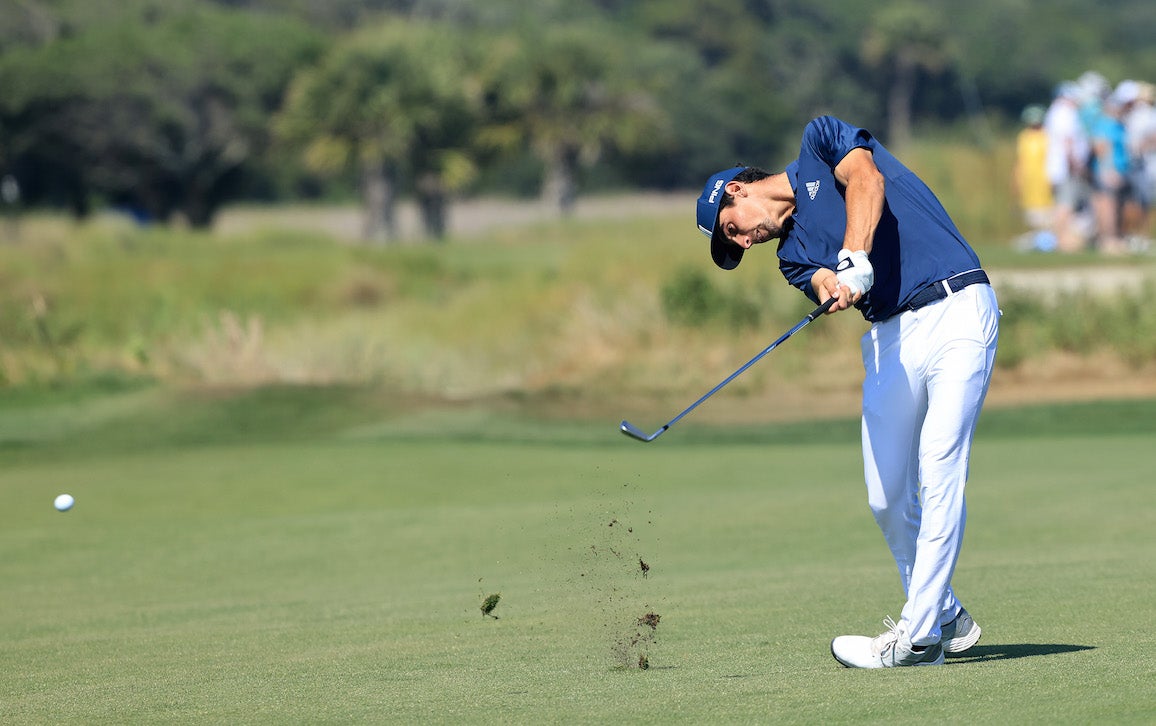
“The common number that gets thrown around is you need to spin your 7 iron at 7,000,” Oates told Fully Equipped . “There’s so many different characteristics. Like Tony Finau could probably spin his 7 iron a little less than Joaquin Niemann, simply because Tony launches it at 18 (degrees) and Niemann launches it at 12.
“If I was fitting for amateur players, I would make sure, number 1, you have enough spin and enough height. If you’re going to err, err on the ball going shorter with your 7 iron with more launch and spin, rather than farther with less spin…if you swing it slower than (pro golfers) you’re actually going to need a steeper landing angle to make sure the ball stops…
“Don’t judge your 7 iron based on the fact you hit it 163 yards and you hit another one 155. A 7 iron is supposed to be hit into a little tight pattern at a pretty steep angle.”
When you’re hitting an iron into the green, the main objective is to get the ball as close to the hole as possible. That means you want to hit the iron that has the most predictable ball flight for the shot at hand, not just the iron that’s going to go the farthest. You want the ball to drop into a bucket, not rocket over the green.
For many amateur golfers, that could mean picking the iron that creates more height, not necessarily more total distance.
The best way to make a decision with iron testing, of course, is to see a trusted professional fitter. Breaking down data can be a complicated task, so consulting a professional is often the best course of action.
Either way, happy testing! The process of experimentation should be fun, and hopefully it can improve your scores, too.
Want to overhaul your bag for 2021? Find a fitting location near you at GOLF’s affiliate company True Spec Golf. For more on the latest gear news and information, check out our latest Fully Equipped podcast below!
Shop more from Ping!

Ping G425 Irons

Ping i210 Irons

Ping Blueprint Irons
Latest in gear, this should be your top priority during golf ball testing, topgolf callaway could look noticeably different next year, you can save big on this best-selling ping fairway wood, true spec's 'shaftember' deal is live here's how to enjoy big savings, andrew tursky.
Andrew Tursky is the Senior Equipment Editor at GOLF Magazine and GOLF.com.
- Author Twitter Account
- Author Instagram Account

IMAGES
VIDEO
COMMENTS
Trackman provides the latest insights from leading professional golf tours, based on data from competition and range. Explore the new Tour Averages for PGA and LPGA, including club speed, ball speed, spin rate, and more.
PGA Tour Average Spin Rate. According to Trackman, average spin rates from the PGA Tour in 2022 for each club in the bag was as follows: Driver, 2,686. 3-wood, 3,655. 5-wood, 4,350.
PGA TOUR Stats
Learn how Trackman, a radar system that captures and analyzes data on various aspects of a golfer's swing and ball flight, can help you improve your game. Explore common metrics like clubhead speed, ball speed, launch angle, spin rate, and carry distance, and compare them with PGA Tour averages.
For reference, the PGA Tour average spin rate for a full lob wedge is roughly between 10,000 and 11,500 rpms. This radical change in spin rate is due to how dirt affects the grooves on a club.
To read these shot statistics it's helpful to refer to Trackman's definition: "A negative spin axis represents a ball curving to the left, a positive spin axis represents a ball curving to the right, and a zero-spin axis represents a shot that has no curvature." ... Average PGA Tour Spin Rates. Club Spin Rate (rpm) Driver: 2686: 3W: 3655: 4 ...
Leaderboard Watch + Listen News FedExCup Schedule Players Stats Golfbet Signature Events Comcast Business TOUR TOP 10 Aon ... Spin Rate. 1 st ... PGA TOUR, PGA TOUR Champions, and the Swinging ...
To hone in on player profiles, we cross-referenced three key ball-striking statistics from the 2021-2022 PGA Tour season: Spin Rate: The amount of backspin generated, measured in revolutions per ...
If, however, your numbers are outside of the ranges listed below, and you're looking for more distance, it may be time to address either your equipment or swing to find your optimal performance ...
As you can see, the club speed for the average PGA Tour pro is 113 mph with driver. Cameron Champ currently leads the club-head speed charts this season with a 129.72 average. You'll also notice ...
Learn how Trackman's Doppler radar and club and ball tracking technology revolutionizes golf analytics and viewing for the PGA Tour. See how fans can access real-time data on every shot, club and ball performance, and environmental factors.
Learn how the average PGA Tour player hits the ball, and how conditions and situational factors affect their distances. See the actual averages from Trackman data for drives, irons, and wedges.
The feature allows players to see their ball speed, height, spin rate, carry distance and curve from every tee shot using the Trackman Golf Pro app. The data is exclusive to the PGA TOUR and comes ...
Learn how spin rates affect your driving distance, backspin, and other aspects of your game. Find out how to measure, improve, and optimize your spin rates for different clubs and shafts.
PGA TOUR AVERAGES YARDS Club Speed (mph) Attack Angle (deg) Ball Speed (mph) Smash Factor (deg) Launch Ang. Spin Rate (rpm) Max Height (yards) Land Angle (deg) Carry (yards) Driver 113 -1.3° 167 1.48 10.9° 2686 32 38° 275 3-wood 107 -2.9° 158 1.48 9.2° 3655 30 43° 243 5-wood 103 -3.3° 152 1.47 9.4° 4350 31 47° 230
According to Trackman, the average spin rate for a 9-iron on the PGA Tour is 8,793 rpm, for a 7-iron it's 7,124 rpm, and for a 5-iron it's 5,280 rpm. Hot List 2024: Best Players Irons.
The average hides the fact that PGA pro's launch at a surprisingly wide variance of launch conditions. Spin rates vary from 2200 to just over 3000rpm. Tour average ball speed is now 173mph, ranging from 156mph to 191mph. At first glance I don't think the driver numbers have changed that dramatically in the last 8 years.
Learn how spin rate affects the height and distance of your golf shots, and how to adjust your club selection, swing speed and loft to lower your spin rate. See the average spin rates of PGA Tour players and how they compare to your own.
Interestingly, the projected optimal launch angle of 10.4° and back spin of 2,760 rpm closely matches the actual PGA Tour averages of 10.9° launch angle and 2,686 rpm spin rate. The best golfers in the world, naturally, have gravitated toward the launch conditions that optimize performance for their given attack angle.
Fans can watch the PGA Tour and Presidents Cup from September 24 to 29 on Mola and DAZN. Join ST's Telegram channel and get the latest breaking news delivered to you. PGA Tour;
Stats. Team Stats Top Prospect Stats Affiliate Stats Baseball Savant Top Rookies Stats. ... Mariachi Poster Series Watch Party Championship Ring Trophy Tour. Standings. ... Spin Rate: 2183 rpm; Batting LAA. Drury. R. Exit Velocity: -Launch Angle: -Hit Distance: 0 ft; TOP 9. 0 - 2, 2 Out
Schedule PGA Tour 2023 ... Player Statistics; Schedule; ... GOLF Top 100 Teacher Andrew Rice recently posted a video explaining the basics of how spin rate is affected by strike location — and ...
Pro: He got a $100 million loyalty bonus/equity share from PGA Tour Enterprises Inc., the Tour's new for-profit venture. Con: Figuring the highest IRS personal tax rate of 37%, he kept only $63 ...
WINDER, Ga. — The father of the teenager suspected of opening fire at a Georgia high school, killing four people and wounding nine, has been accused of letting his son possess a weapon, authorities said Thursday after announcing the man's arrest. Colin Gray, 54, the father of Colt Gray, has been ...
Learn how to measure and improve your 6-iron performance with True Spec Golf's preferred range of launch monitor parameters. Find out what launch angle, spin rate, peak height and angle of descent ...
Ugandan Olympic athlete Rebecca Cheptegei has died at a Kenyan hospital where she was being treated for burns over 80% of her body from an attack by her partner.
As the 2021 PGA Tour event schedule draws to a close, it's that time of year when pro golfers begin conducting their serious off-season equipment testing.